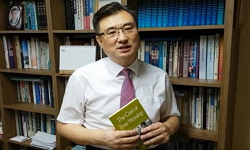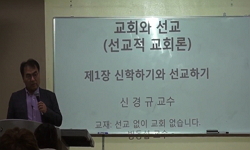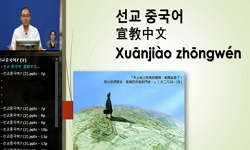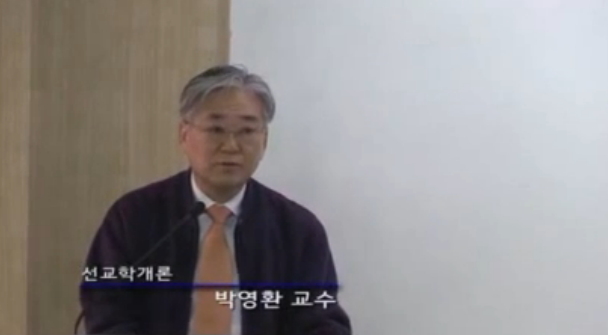2025년 10월 27일부터 31일까지 서울에서 열릴 세계복음주의연맹(WEA) 총회를 앞두고, 보수적인 한국 장로교(합동) 교단 내에서는 WEA의 신학적 정체성과 교류 가능성에 대한 우려가 제기되고 있...
http://chineseinput.net/에서 pinyin(병음)방식으로 중국어를 변환할 수 있습니다.
변환된 중국어를 복사하여 사용하시면 됩니다.
- 中文 을 입력하시려면 zhongwen을 입력하시고 space를누르시면됩니다.
- 北京 을 입력하시려면 beijing을 입력하시고 space를 누르시면 됩니다.

종교 간의 대화: 그 기여와 한계「다종교 세계에서 그리스도인의 증거: 실천 권고안」(2011)을 중심으로 = Interreligious Dialogue: Its Contributions and Limitations Focusing on “Christian Witness in a Multi-Religious World: Recommendations for Conduct” (2011)
한글로보기https://www.riss.kr/link?id=A109683956
-
저자
김정우 (총신대학교)
- 발행기관
- 학술지명
- 권호사항
-
발행연도
2025
-
작성언어
Korean
-
주제어
Interfaith Dialogue ; Christian Witness ; Religious Pluralism ; inclusivism ; syncretism ; mission ; common good ; WEA ; WCC ; 종교 간의 대화 ; 그리스도인의 증거 ; 종교다원주의 ; 포용주의 ; 혼합주의 ; 선교 ; 공동선 ; 세계복음주의 연맹 ; 세계교회협의회
-
등재정보
KCI등재
-
자료형태
학술저널
-
수록면
5-38(34쪽)
- 제공처
-
0
상세조회 -
0
다운로드
부가정보
국문 초록 (Abstract)
본 연구는 기존 번역을 원문과 함께 비판적으로 검토하고 새로운 번역을 제시하며, 학계의 평가를 분석하는 것을 목표로 한다. 연구 결과, WEA, WCC, 그리고 가톨릭교회 간의 역사적 신학적 차이에도 불구하고, 해당 문서는 세 기관이 공동으로 동의할 수 있는 최소 공통분모를 반영하고 있음을 확인하였다. 또한 작금의 비판과는 달리, 이 문서는 WCC나 가톨릭 신학으로의 이동을 반영하기보다는 복음주의 신학적 관점을 분명히 드러내고 있다.
본 연구는 문서에 대한 주요 비판들을 평가한다. 첫째, 본 문서가 종교 다원주의, 포용주의 또는 혼합주의를 조장한다는 주장에 대해, WEA의 179년 역사 속에서 그러한 신학적 입장을 찾을 수 없음을 지적하며 이를 반박한다. 둘째, 본 문서가 신학적 내용과 실천을 이분법적으로 분리한다는 비판에 대해, 오히려 이 문서는 선교적 사역을 위한 신학적 토대를 제공하며, 정통신학의 핵심 사항들과 윤리적 실천을 균형 있게 강조하고 있음을 밝힌다. 셋째, 번역상의 부정확성이 오해를 초래했음을 지적하며, 공동선을 위한 종교 간 협력과 민감한 종교적 갈등 상황에서 제시된 선교 지침이 잘못 해석된 사례들을 분석한다.
이 문서의 기여에 대해 살펴보면, 복음 전도의 성경적 틀을 제공하며, 개인적 증언, 종교 간 대화, 인간 존엄성과 종교의 자유에 대한 존중을 강조한다. 그러나 몇 가지 한계도 존재한다. 특히 서구 중심적 관점이 작성이 되어 한국의 종교적·문화적 상황을 충분히 반영하지 못할 가능성이 있다. 또한, 종교 간 대화는 기독교 증거에 있어 중요한 요소이지만, 초교파적 교류에서 신학적 정체성을 유지하기 위한 명확한 가이드라인이 추가적으로 필요한 것으로 보인다.
결론적으로, 본 문서는 기독교 신앙과 신학의 핵심 원칙에서 벗어나지 않으며, 다종교 세계에서 복음주의적 증거를 위한 실천적 지침으로 기능한다. WEA가 WCC 및 가톨릭 신학적 포용주의와 동일하다는 주장은 근거가 부족하다. 현대의 종교적 갈등 속에서 본 문서의 원칙들은 다원적 사회에서의 기독교적 참여를 위한 시의적절하고 필수적인 틀을 제공하며, 한국 교회의 세계 선교와 종교 간 대화에 있어 중요한 지침으로 기능할 것으로 기대된다.
2025년 10월 27일부터 31일까지 서울에서 열릴 세계복음주의연맹(WEA) 총회를 앞두고, 보수적인 한국 장로교(합동) 교단 내에서는 WEA의 신학적 정체성과 교류 가능성에 대한 우려가 제기되고 있다. 가장 강한 비판 중 하나는 WEA의 신학적 입장이 세계교회협의회(WCC)와 로마 가톨릭과 같은 에큐메니칼 운동과 일치하며, 포용주의, 혼합주의, 그리고 종교 다원주의를 촉진한다는 것이다. 이러한 비판의 중요한 근거는 WEA가 로마 가톨릭 및 WCC와 함께 「다종교 세계에서 그리스도인의 증거: 실천 권고안」(2011) 문서에 공동 서명한 사실에 있다.
본 연구는 기존 번역을 원문과 함께 비판적으로 검토하고 새로운 번역을 제시하며, 학계의 평가를 분석하는 것을 목표로 한다. 연구 결과, WEA, WCC, 그리고 가톨릭교회 간의 역사적 신학적 차이에도 불구하고, 해당 문서는 세 기관이 공동으로 동의할 수 있는 최소 공통분모를 반영하고 있음을 확인하였다. 또한 작금의 비판과는 달리, 이 문서는 WCC나 가톨릭 신학으로의 이동을 반영하기보다는 복음주의 신학적 관점을 분명히 드러내고 있다.
본 연구는 문서에 대한 주요 비판들을 평가한다. 첫째, 본 문서가 종교 다원주의, 포용주의 또는 혼합주의를 조장한다는 주장에 대해, WEA의 179년 역사 속에서 그러한 신학적 입장을 찾을 수 없음을 지적하며 이를 반박한다. 둘째, 본 문서가 신학적 내용과 실천을 이분법적으로 분리한다는 비판에 대해, 오히려 이 문서는 선교적 사역을 위한 신학적 토대를 제공하며, 정통신학의 핵심 사항들과 윤리적 실천을 균형 있게 강조하고 있음을 밝힌다. 셋째, 번역상의 부정확성이 오해를 초래했음을 지적하며, 공동선을 위한 종교 간 협력과 민감한 종교적 갈등 상황에서 제시된 선교 지침이 잘못 해석된 사례들을 분석한다.
이 문서의 기여에 대해 살펴보면, 복음 전도의 성경적 틀을 제공하며, 개인적 증언, 종교 간 대화, 인간 존엄성과 종교의 자유에 대한 존중을 강조한다. 그러나 몇 가지 한계도 존재한다. 특히 서구 중심적 관점이 작성이 되어 한국의 종교적·문화적 상황을 충분히 반영하지 못할 가능성이 있다. 또한, 종교 간 대화는 기독교 증거에 있어 중요한 요소이지만, 초교파적 교류에서 신학적 정체성을 유지하기 위한 명확한 가이드라인이 추가적으로 필요한 것으로 보인다.
결론적으로, 본 문서는 기독교 신앙과 신학의 핵심 원칙에서 벗어나지 않으며, 다종교 세계에서 복음주의적 증거를 위한 실천적 지침으로 기능한다. WEA가 WCC 및 가톨릭 신학적 포용주의와 동일하다는 주장은 근거가 부족하다. 현대의 종교적 갈등 속에서 본 문서의 원칙들은 다원적 사회에서의 기독교적 참여를 위한 시의적절하고 필수적인 틀을 제공하며, 한국 교회의 세계 선교와 종교 간 대화에 있어 중요한 지침으로 기능할 것으로 기대된다.
다국어 초록 (Multilingual Abstract)
Through a critical review of existing translations alongside the original text, this study aims to provide a new translation while assessing scholarly evaluations of the document. The study finds that despite historical theological differences among WEA, WCC, and the Catholic Church, the document represents a minimal common denominator that they can collectively endorse. Contrary to critiques, the document clearly reflects evangelical theological perspectives rather than a shift towards WCC or Catholic theological positions.
The study evaluates key criticisms of the document. First, it refutes claims that the document promotes religious pluralism, inclusivism, or syncretism, arguing that WEA’s 179-year history contains no such theological stance. Second, it addresses the critique that the document exhibits a dichotomous separation between theological content and practice. Instead, it provides a theological foundation for missionary engagement, offering clear statements on the core aspects of orthodox theology while maintaining a balance with ethical practice. Third, it identifies translation inaccuracies that have led to misunderstandings, such as misinterpretations of interfaith cooperation for the common good and contextual ministry guidelines.
Regarding its contributions, the document offers a comprehensive biblical framework for mission, emphasizing personal witness, interfaith dialogue, and respect for human dignity and religious freedom. However, it has limitations, particularly in its Western-centric perspective, which may not fully address the religious and cultural contexts of Korea. Additionally, while interfaith dialogue is essential for Christian witness, clearer guidelines are needed to ensure doctrinal integrity in ecumenical engagements.
In conclusion, the document does not deviate from core Christian theological principles but serves as a practical guideline for evangelical witness in a multi-religious world. The claim that WEA aligns with WCC and Catholic theological inclusivism is unsubstantiated. Given contemporary religious tensions, the document’s principles offer a timely and essential framework for Christian engagement in pluralistic societies and are expected to serve as a critical guideline for Korean churches in their global missions and interfaith dialogues.
As the World Evangelical Alliance (WEA) prepares for its General Assembly in Seoul from October 27-31, 2025, concerns have been raised within the conservative Korean Presbyterian denomination (Hapdong) regarding WEA’s theological identity and potent...
As the World Evangelical Alliance (WEA) prepares for its General Assembly in Seoul from October 27-31, 2025, concerns have been raised within the conservative Korean Presbyterian denomination (Hapdong) regarding WEA’s theological identity and potential engagements. One of the most pointed criticisms is that WEA’s theological stance aligns with ecumenical movements such as the World Council of Churches (WCC) and the Roman Catholic Church, thus advancing inclusivism, syncretism, and religious pluralism. A significant basis for this critique is WEA’s co-signing of the document Christian Witness in a Multi-Religious World: Recommendations for Conduct (2011) alongside the Roman Catholic Church and WCC.
Through a critical review of existing translations alongside the original text, this study aims to provide a new translation while assessing scholarly evaluations of the document. The study finds that despite historical theological differences among WEA, WCC, and the Catholic Church, the document represents a minimal common denominator that they can collectively endorse. Contrary to critiques, the document clearly reflects evangelical theological perspectives rather than a shift towards WCC or Catholic theological positions.
The study evaluates key criticisms of the document. First, it refutes claims that the document promotes religious pluralism, inclusivism, or syncretism, arguing that WEA’s 179-year history contains no such theological stance. Second, it addresses the critique that the document exhibits a dichotomous separation between theological content and practice. Instead, it provides a theological foundation for missionary engagement, offering clear statements on the core aspects of orthodox theology while maintaining a balance with ethical practice. Third, it identifies translation inaccuracies that have led to misunderstandings, such as misinterpretations of interfaith cooperation for the common good and contextual ministry guidelines.
Regarding its contributions, the document offers a comprehensive biblical framework for mission, emphasizing personal witness, interfaith dialogue, and respect for human dignity and religious freedom. However, it has limitations, particularly in its Western-centric perspective, which may not fully address the religious and cultural contexts of Korea. Additionally, while interfaith dialogue is essential for Christian witness, clearer guidelines are needed to ensure doctrinal integrity in ecumenical engagements.
In conclusion, the document does not deviate from core Christian theological principles but serves as a practical guideline for evangelical witness in a multi-religious world. The claim that WEA aligns with WCC and Catholic theological inclusivism is unsubstantiated. Given contemporary religious tensions, the document’s principles offer a timely and essential framework for Christian engagement in pluralistic societies and are expected to serve as a critical guideline for Korean churches in their global missions and interfaith dialogues.
동일학술지(권/호) 다른 논문
-
Jacob’s Testament Once Again (Gen 49:3-27): Messianic Implications in the Chiastic Rearrangement
- 한국신학정보연구원
- Hannah An
- 2025
- KCI등재
-
The Difference between God-Fearing and YHWH-Fearing: On translating yir’at ˀĕlōhîm
- 한국신학정보연구원
- David Toshio Tsumura
- 2025
- KCI등재
-
- 한국신학정보연구원
- 안창선
- 2025
- KCI등재
-
How to Become Wise: Changing Modes of Wisdom Acquisition in Later Jewish Wisdom Texts
- 한국신학정보연구원
- 유선명
- 2025
- KCI등재




 DBpia
DBpia






